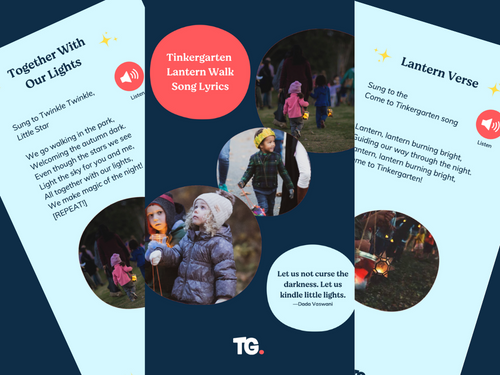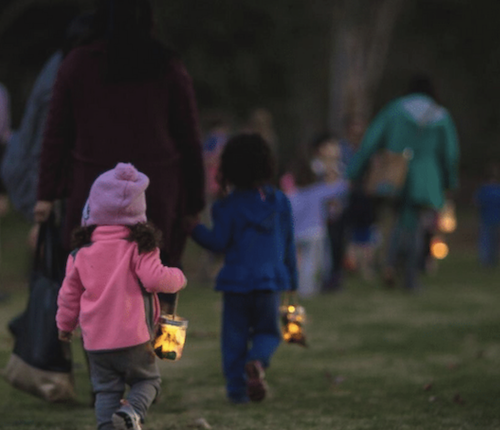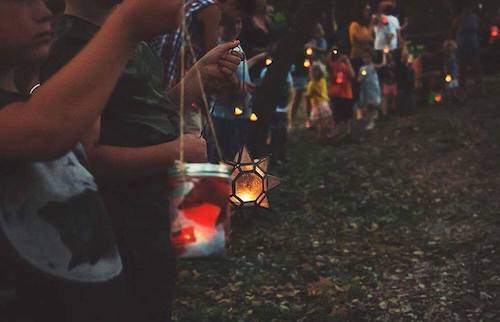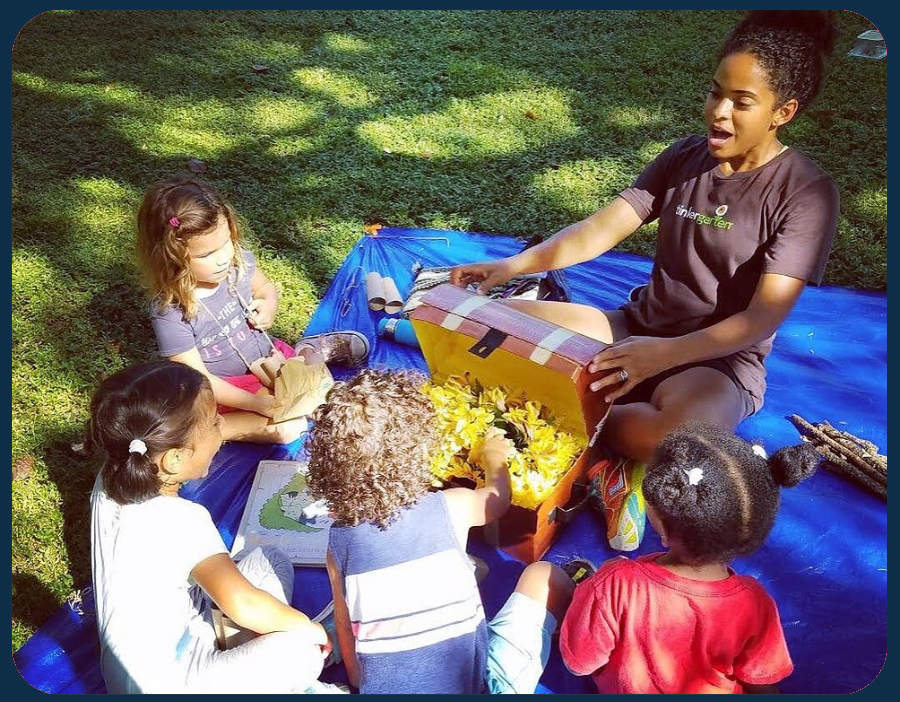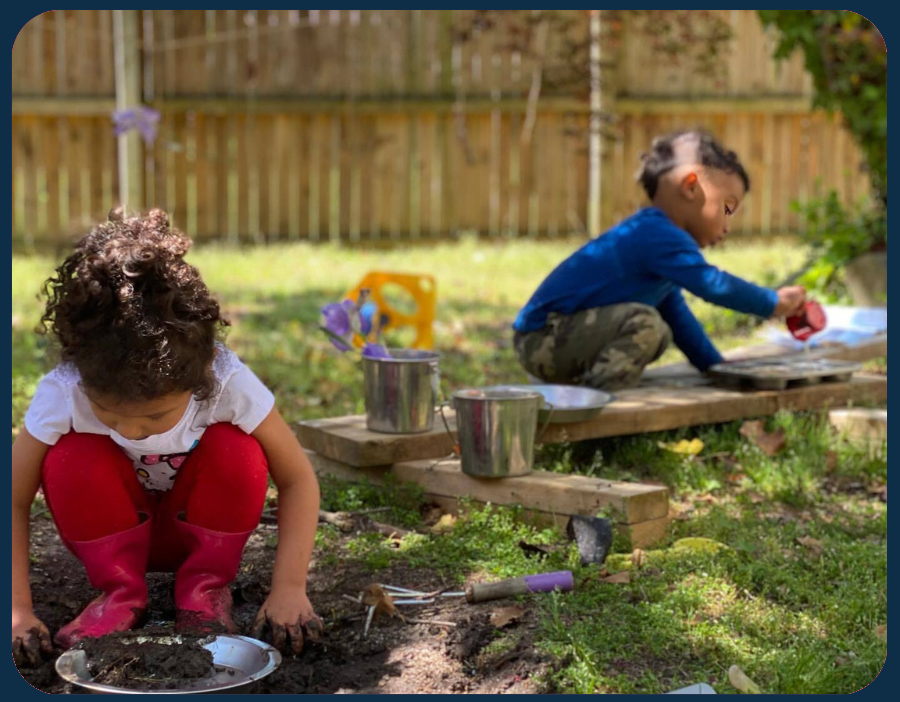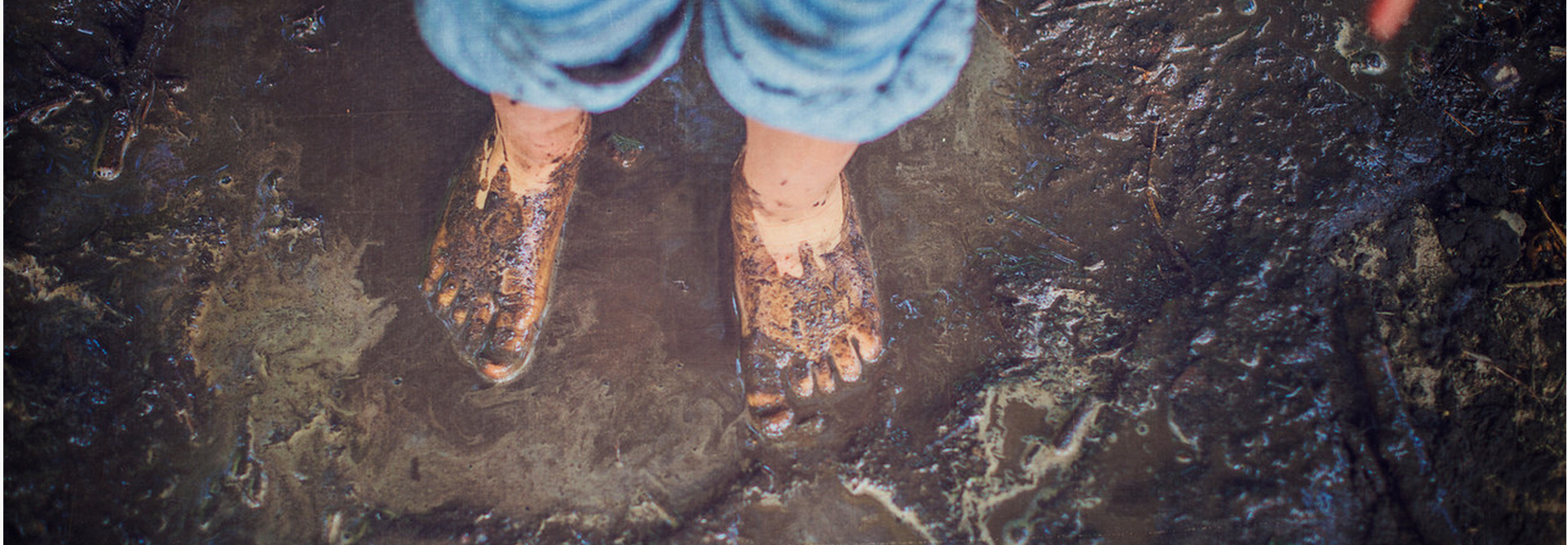Join or Host a Lantern Walk!
-
Age: 0 to 8+
-
Time: 1 hour+
-
Materials: homemade fall lanterns, LED tea lights, downloadable song lyrics
- Skills: Naturalist, Sensory, Teamwork
For 12 years running, our Lantern Walk has become a magical, annual tradition, designed to help kids big and small, notice and welcome the darkness that comes as winter approaches.
Together, we learn to embrace change as a beautiful part of our world. This year, hundreds of thousands of people across our broad community will light their lanterns and head outside to walk, sing and enjoy the beauty of our little lights against the dark evening sky.
This chance to feel connected to one another, our community and the natural world can provide us a lasting dose of hope to carry into the upcoming winter and the year of 2025!
Together, we learn to embrace change as a beautiful part of our world. This year, hundreds of thousands of people across our broad community will light their lanterns and head outside to walk, sing and enjoy the beauty of our little lights against the dark evening sky.
This chance to feel connected to one another, our community and the natural world can provide us a lasting dose of hope to carry into the upcoming winter and the year of 2025!
Here’s how your family can join a local Lantern Walk or host a walk of your own!
This activity is featured every year in our November Activity Calendar. Click here to make sure you're signed up to receive this free resource every month!
This activity is featured every year in our November Activity Calendar. Click here to make sure you're signed up to receive this free resource every month!
The Guide
Step 1: Make lanterns.

Read our Fall Lantern DIY to learn how to make a colorful lantern using a jar, tissue paper, glue, twine and an LED tea light. You can also get or gift our lantern making kit, which provides everything you need to turn a jar into a lantern.
Want a fun way to get friends and neighbors involved? Pop up a lantern stand! Instead of lemonade, pop up a lantern stand in your neighborhood. Offer the materials and inspiration neighbors need to make lanterns and join in the walk. As neighbors walk by, tell them about the event and welcome them to join this beautiful tradition with you.
Step 2: Decide where, when and with whom you will walk.
There are two ways to participate.
Find a Local Tinkergarten Walk: Visit tkgtn.com/walk to see if there is a Tinkergarten Teacher hosting a Lantern Walk event near you. If so, click to register and join in!
Find a Local Tinkergarten Walk: Visit tkgtn.com/walk to see if there is a Tinkergarten Teacher hosting a Lantern Walk event near you. If so, click to register and join in!
Host your Own Lantern Walk: Want to host a walk for you, your family or some friends? Check out this PDF Lantern Walk Guide!
Local Tinkergarten-hosted Lantern Walks will take place in early December and are open for enrollment. Search for a walk near you at tinkergarten.com/lantern.
(Tip: We recommend meeting up for your walk about 30 minutes before sunset in your area. Click here to find sunset in your area on the day of your walk.)
Step 3: Gather Materials for Your Walk:
- Homemade Lanterns (See Fall Lesson 8: Making Lanterns)
- LED tea lights (examples in our Lantern Walk Amazon list)
- Twine (to help fashion handles)
Step 4: Practice Lantern Songs
Check out our Tinkergarten Digital Song Sheet (with audio and lyrics) to learn and include special songs in your walk.
Step 5: Walk!
On the evening of your walk, layer up, grab your lanterns and LED tea lights and gather as a family or meet up with your friends and neighbors. Sing songs, light your lanterns and take a stroll together. Circle up at the end to listen to the sounds, smell the smells and just enjoy the beauty you’ve all made together. Take a moment to remember that life is always changing, yet our family, community and the natural world always remain here for us!
Step 6: Get cozy and share!
After your walk, brew some tea and enjoy cozy time together. You can keep that cozy ritual and your lantern going throughout the winter, too! Or, pack a thermos and enjoy a spot of tea as part of your Lantern Walk, too!
Share your photos and stories using #TGLanternWalk and #Tinkergarten to help spread light and hope across the Tinkergarten community. We can't wait to celebrate with everyone!
Why is this activity great for kids?
Our Annual Lantern Walk has become a magical, annual tradition, designed to help kids big and small, welcome the darkness of winter and learn to embrace this big, natural change together with joy. Learning to embrace change is an important part of becoming resilient and helps kids develop a habit of mind that will help them navigate life.
